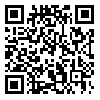Volume 10, Issue 5 (2008)
JAST 2008, 10(5): 411-420 |
Back to browse issues page
Download citation:
BibTeX | RIS | EndNote | Medlars | ProCite | Reference Manager | RefWorks
Send citation to:



BibTeX | RIS | EndNote | Medlars | ProCite | Reference Manager | RefWorks
Send citation to:
Kumar S, Saini R K. Feeding Preference and Damage Potential of Helicoverpa
armigera (Hübner) on Different Promising Cotton
Genotypes/Hybrid. JAST 2008; 10 (5) :411-420
URL: http://jast.modares.ac.ir/article-23-872-en.html
URL: http://jast.modares.ac.ir/article-23-872-en.html
1- Department of Plant Breeding, Genetics and Biotechnology, Punjab Agricultural University, Ludhiana-
141004, Punjab, India.
2- Department of Entomology, CCS Haryana Agricultural University, Hisar-125004, Haryana, India.
2- Department of Entomology, CCS Haryana Agricultural University, Hisar-125004, Haryana, India.
Abstract: (7204 Views)
The larval feeding preference and damage potential of Helicoverpa armigera (Hübner) on promising cotton genotypes/hybrid were studied during 2004 under laboratory and field conditions at CCS Haryana Agricultural University, Hisar, Haryana, India. Third and fifth instar larvae were allowed to feed on different types of fruiting body (squares, flowers and young bolls) of various genotypes/hybrid in the laboratory to determine the relative feeding preference by the larva. For studying damage potential, the larvae were allowed to feed individually up until pupation on a single or all types of fruiting body of different genotypes/hybrid, both under laboratory and field conditions. The mean num-ber of fruiting bodies damaged by a larva was determined. The results indicated that the arboreum genotypes (HD-123 and HD-324) and the hirsutum genotype, H-1226, were pre-ferred by neither third nor fifth instar larvae for feeding. The order of preference of the remaining genotypes/hybrid was HS-6> H-1117> HHH-223 (hybrid)> H-1098 with respect to third instar and HHH-223> H-1098> H-1117> HS-6 for fifth instar larvae. Among dif-ferent fruiting bodies, the third instar larvae exhibited greater preference for flowers while the fifth instar for young bolls, irrespective of genotypes. Under laboratory condi-tions, a larva damaged more squares, followed by flowers and young bolls. Larvae caused significantly greater damage to fruiting bodies in the arboreum than the hirsutum geno-types/hybrid during the course of development. The hybrid generally recorded signifi-cantly lower square and boll damage. Under field conditions, a larva from hatching till pupation required on average 9.00 squares, 7.88 flowers or 4.20 bolls of H-1098 when re-stricted to feeding on a single type of fruiting body but 1.25 squares, 2.75 flowers and 2.12 bolls when all types of fruiting bodies were available to.
Received: 2010/01/28 | Accepted: 2010/01/28 | Published: 2010/01/28
| Rights and permissions | |
 |
This work is licensed under a Creative Commons Attribution-NonCommercial 4.0 International License. |







